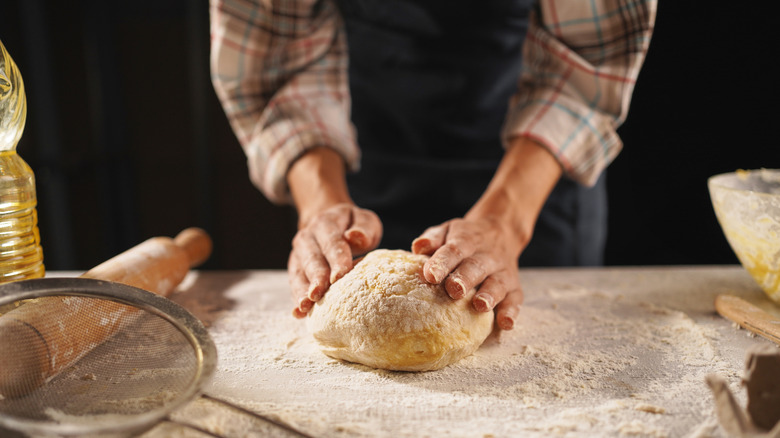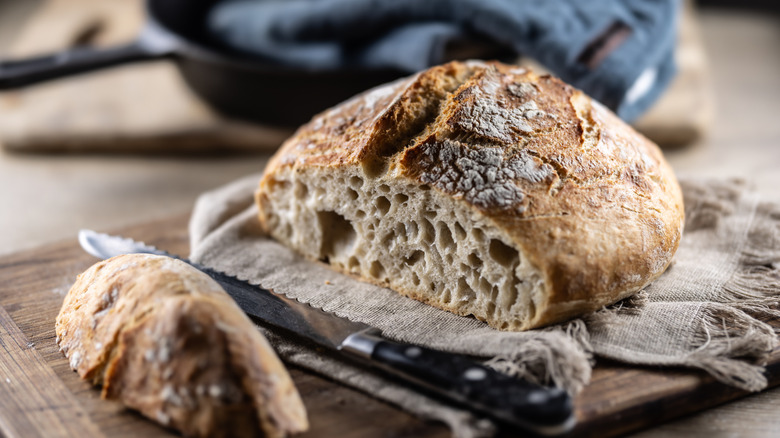What Exactly Is 'Artisan' Bread And Why Is It More Expensive?
If you love good bread, then you must have noticed that artisan bakeries are trending everywhere lately and making a powerful comeback across the globe. The reason we call it a comeback, though, is because they're actually nothing new. In fact, artisan bread dates back to ancient times. It then reemerged in the late 20th century, when people tried to push back against mass-produced food and embraced old-school baking again. Now back in the spotlight, with everyone talking about it but no one really breaking things down, it's only natural to wonder — what exactly is artisan bread?
A quick glance at the 25 common types of bread, and you'll find plenty that fall under the category. While there's no strict definition, artisan bread refers to a type of handmade bread with a short shelf life. It is furthermore sold unpackaged and best enjoyed fresh out of the oven. Prepared using traditional methods and the finest of ingredients, artisan bread stands out for being low in sugar and fat, its minimal use of additives — except for enzymes that improve dough stability and quality, and ease handling — and hydration levels tailored to fit its final shape and texture.
In addition, thanks to enzymes breaking down the gluten early in the preparation process, artisan bread is much easier on the stomach than regular bread. Yet while all of the details that make it different from regular bread might easily slip by, its hefty price tag is definitely something that will make you look twice.
There are several reasons artisan bread costs more
Whether it's a slightly tangy sourdough, a mild, wheaty ciabatta — the underrated crusty bread you need for perfect bruschetta — a soft and pillowy focaccia, or a classic baguette that might leave you questioning why French baguettes are so long, artisan breads have a unique texture and flavor, and often look rustic, making them a real treat for both our eyes and our taste buds. This, along with the top-notch ingredients like organic flour and sea salt they're made with, and the careful craftsmanship behind every loaf, significantly drives their price up.
That's not the only reason regular bread costs less than $2, while baguettes sometimes even go for around $4 each. Artisan bread comes at a higher price because it's made by skilled bakers who undergo years of training to showcase their creativity through the bread's shape, scoring, and crust. What's more, preparing artisan bread is a very time-consuming process, meaning it's made in much smaller batches than regular bread. Additionally, the use of specialty grains and natural fermenting agents like wild yeasts further raises production costs and is ultimately reflected in the final price.
Finally, while artisan bread often offers better health and nutrition than regular bread — a big plus for health-conscious consumers — clever marketing also plays a major role in its higher price. As it usually comes wrapped in paper or simple eco-friendly packaging, artisan bread doesn't just look premium, it is also more appealing to environmentally aware consumers. Regardless, artisan bread may be worth a try if you're looking for a delicious, albeit expensive, experience.

